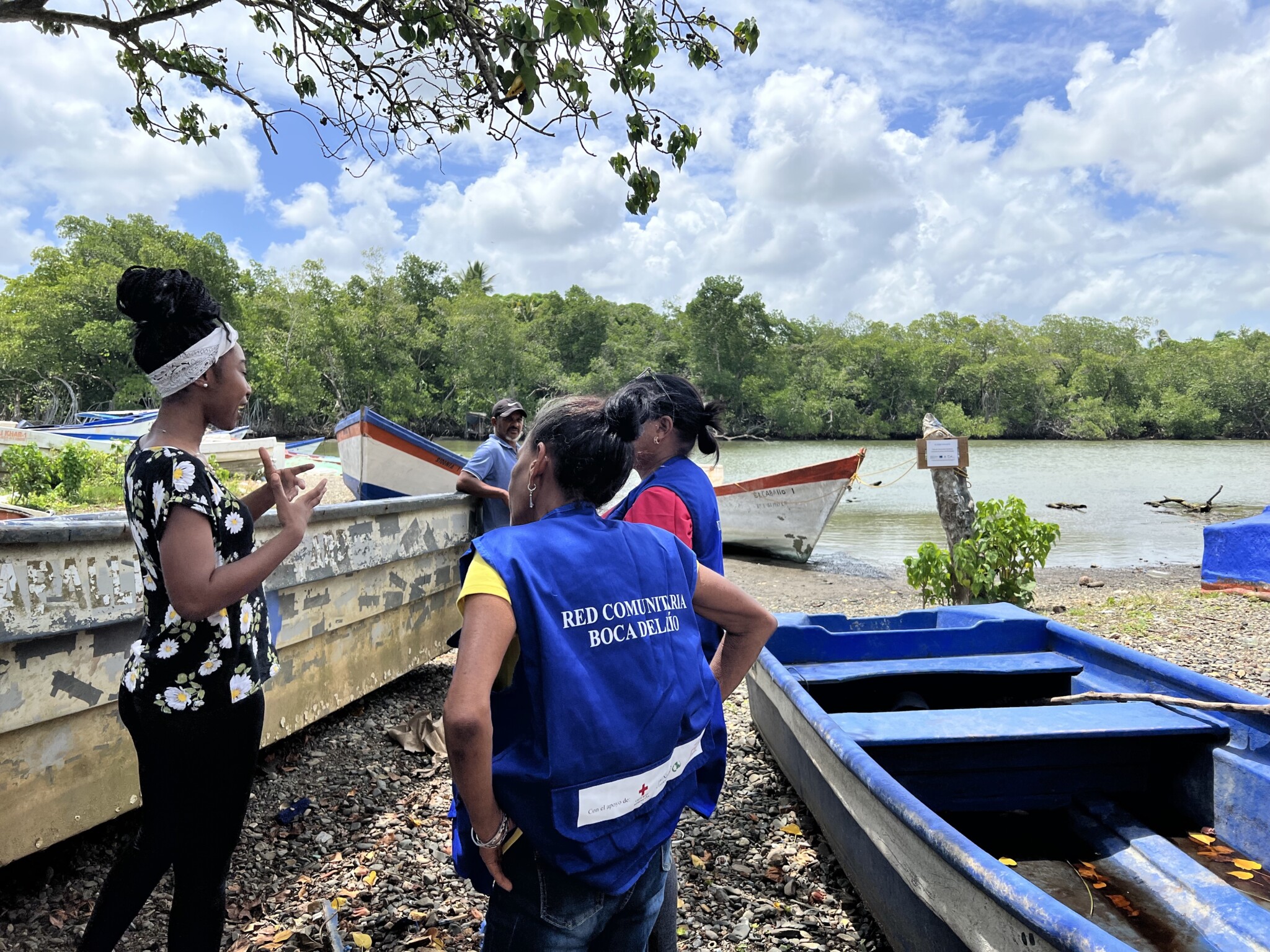
Read more
Related articles for further reading
In coastal countries, especially in the Caribbean, the health and equilibrium of nature – including forests, reefs, mangroves, rivers, oceans, and seagrass beds – are not only the main economic resources for surrounding livelihoods but also a matter of survival and protection for the communities that call these areas home. In 2019, when Hurricane Maria devastated riverside villages such as Miches in the Dominican Republic, riverside communities counted on a powerful ally to the rescue: the mangroves.
“When the river overflowed its banks, it was a major event that we never want to experience again. I saw people screaming in despair. Then I saw the floodwaters already coming to cover us,” remembers Maura Acosta, community network coordinator from the Resilient Islands Project. “But what happened is: the mangroves are there. We are at the mouth of the river! So, the floodwater was very high up there, but here it receded. This experience made me care for and protect those mangroves together with the community.”
The insular countries and their populations are on the frontline of climate change, bearing some of the heaviest impacts. Any disruption in this equilibrium dramatically reduces the population’s ability to withstand natural disasters. Reefs, for example, protect coastlines by lessening the weight and intensity of waves. In the natural landscape, seagrass beds and mangroves can also absorb the remaining energy from waves and storms, reducing the likelihood of floods and coastal erosion.
“The diversity of a reef may encompass at least 30% of all ocean species. By maintaining reefs in good condition, in addition to providing coastal protection, sources of employment are generated through recreational activities and artisanal fishing, on which many people along the coast depend,” explains Andreína Rivera, science coordinator at Grupo Punta Cana, leading a micro-fragmentation project for accelerating reef growth.
Increasing forest coverage in coastal areas also enhances the capacity for flood absorption, as demonstrated by the community of Santo Domingo, also located in the Dominican Republic. Employing agroforestry techniques, local farmers are planting native cocoa trees to bolster their resilience against disasters and generate economic resources for a population that’s already experiencing the effects of a changing climate.
This is why local communities, scientists, and public and private organizations in the Dominican Republic are collaborating to find solutions that combine and maximize the potential of these ecosystems to enhance resilience and adapt to impacts. “We invest heavily in research, and all that information is then incorporated into the projects. Additionally, all of this is complemented by the experience of local communities, as they understand how the entire ecosystem of their areas functions and how this knowledge can be adapted to their specific environment,” says Tomeira Zambrando, Coordinator of the Dominican Reef Network.
Nature in Action: case studies from across the globe
Naturebase features real-world stories like this, focusing on people’s experiences as they successfully protect, restore, and sustainably manage their lands across different countries and regions to inspire climate ambition. Additionally, the platform hosts a growing natural climate solutions learning network designed to field-test and evaluate high-impact strategies that can be scaled and replicated worldwide. In doing so, naturebase not only helps stakeholders tackle the challenge of data integration and accessibility but also enables informed decision-making on the implementation of effective natural climate solutions worldwide.
The “Nature in Action” series, produced in collaboration with community-led filmmakers from If Not Us Then Who, tells stories of people and communities leading the groundwork on nature protection and recovery, highlighting successful nature-based solutions and strong Indigenous and local communities’ leadership that successfully link science, policy and action to positively influence on climate discussions and decision-making for high impact nature-based action. See all the films here.